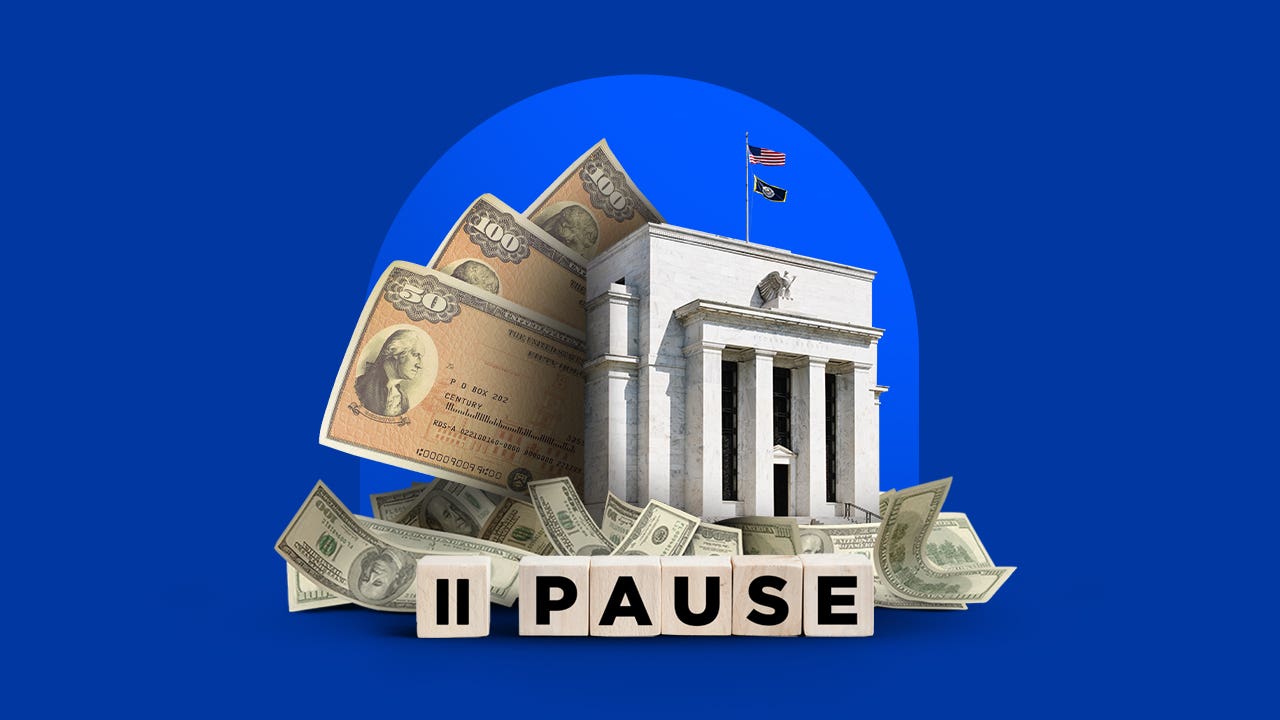The Fed is pausing interest rates, is it safe to buy bonds?

In March, the Federal Reserve decided to hold interest rates steady, making it two meetings in a row that the nation’s central bank has stood pat. In its decision, the Fed cited uncertainties about the economy, including the impacts from President Donald Trump’s proposed tariffs and their potential to raise inflation. The tariffs and other Trump policies could further stoke prices, making it harder for the Fed to cut rates and delaying the already-expected rate cuts in 2025.
With the Fed pausing on rates for now, is it a good time for investors to buy bonds, expecting them to rise if the Fed cuts rates later this year? Or should investors hold off on bonds for now?
With the Fed paused on rates, is it time to buy bonds?
Bond investors pay particular attention to the expected path of rates because it can indicate how bonds will perform. It’s important to know that bond prices and interest rates move inversely. That is, bond prices rise when prevailing interest rates fall, and prices fall when rates rise.
But the effect of interest rates on bond prices differs depending on the bond’s maturity. The longer the maturity, the more it’s affected by a change in rates. Bonds maturing in less than a year, such as U.S, Treasury bills, are minimally impacted by normally modest changes in rates.
“Longer-maturity bonds are more sensitive to changes in interest rates, so investing in longer-term bonds would benefit investors if interest rates should fall, such as if economic growth slows, when the bonds would rise in price,” says Gene Balas, investment strategist at Signature Estate & Investment Advisors. “On the other hand, if inflation expectations increase, and bond yields rise, then the price of shorter-term bonds would fall by a smaller amount than would longer-term bonds.”
With the Fed starting to cut rates in September 2024 by 50 basis points, investors may have expected rates to continue falling in the near future, even if slowly, remaining “higher for longer.” Instead, the Fed cut rates 25 basis points each at the next two meetings, and then stood firm at its January and March meetings. The Fed’s pause might give investors pause as well.
“What this level of uncertainty — both as to economic growth as well as inflation — means for bond investors is that there is a greater range of potential outcomes for the levels of interest rates across the yield curve,” says Balas.
“The risk remains highly elevated for an increase in yields, not a decrease,” says Edison Byzyka, chief investment officer at Credent Wealth Management.
Byzyka says that consumer inflation expectations have begun inching up and that the S&P 500 stock index’s growth was driven mostly by discretionary stocks in the last quarter. Consumer discretionary stocks are cyclical, and they tend to be among the hottest stocks just before the market begins to peak and move into a slowdown, as consumers are flush with cash and willing to spend on luxuries.
Higher uncertainty generally means that the reward for investors — the payment they receive on their bonds — must go up, so the price of the bond must go down. For now, uncertainty continues to rise. While the Fed still is figuring in two rate cuts for 2025, the number of Fed policymakers who expect one cut or even no cuts rose in the March meeting, relative to December’s meeting.
What should bond investors be doing now?
Since changes in interest rates affect bonds differentially depending on their maturity, the decision to invest in bonds is not just about your expectations around inflation but also about when you need the money and why you’re investing in bonds to begin with.
“This is an environment where bond investors should truly question the reason why they’re investing in bonds,” says Byzyka. If you want to add some diversification to stocks, he says to stick to short-term bonds and not try to outperform with medium- or long-term maturities.
Byzyka suggests that if you’re looking for income and relative outperformance, you could move to bonds of longer duration. These bonds can offer higher yields now and have the potential to rise if the Fed continues to lower rates this year, but you’re taking on some risk to do so.
“A balance of the two is where we would recommend,” says Byzyka. He suspects investors will have a more opportune time to jump into higher-duration bonds over the next six months.
Balas suggests an old strategy favorite to counter interest rate risk and an uncertain outlook: the bond ladder.
“Rather than investing in a bond at a single point in the yield curve, investors may be better served by ‘laddering’ their bond holdings across a range of maturities,” he says.
“By spreading bond holdings across a range of maturities, it may help position your portfolio for interest rates that either stay high for longer in case inflation proves to be stubborn, or that may fall in case the economy slows more than expected,” says Balas.
With the Fed taking a “higher for longer” position on interest rates — an approach that seems to be lengthening at each Fed meeting — investors should carefully plan for uncertainty.
Bottom line
With the increased uncertainty surrounding the economic picture, bond investors should consider why they’re investing in bonds and then develop an investing strategy that mirrors that purpose. Investors who are not interested in selecting individual bonds can opt for some of the best bond ETFs and select the duration they’re looking for.
Editorial Disclaimer: All investors are advised to conduct their own independent research into investment strategies before making an investment decision. In addition, investors are advised that past investment product performance is no guarantee of future price appreciation.






